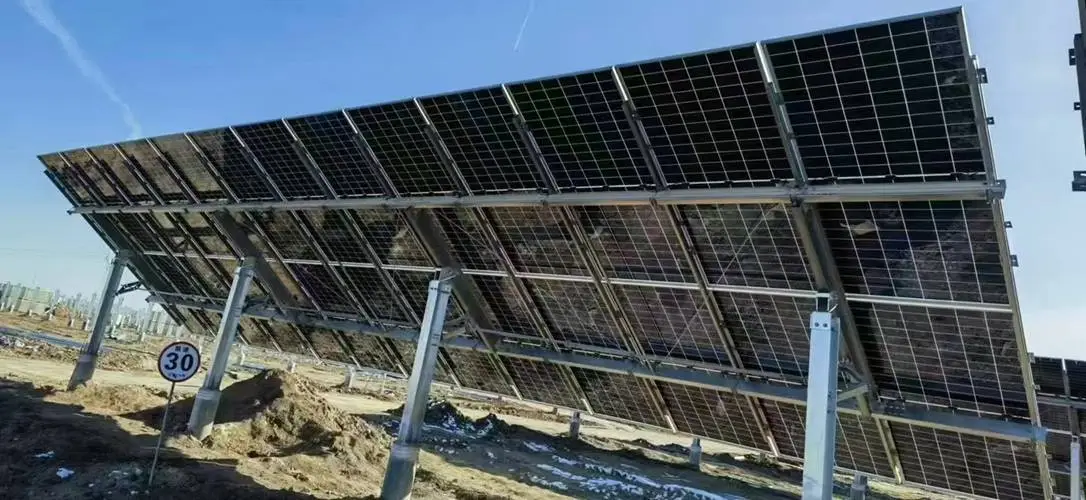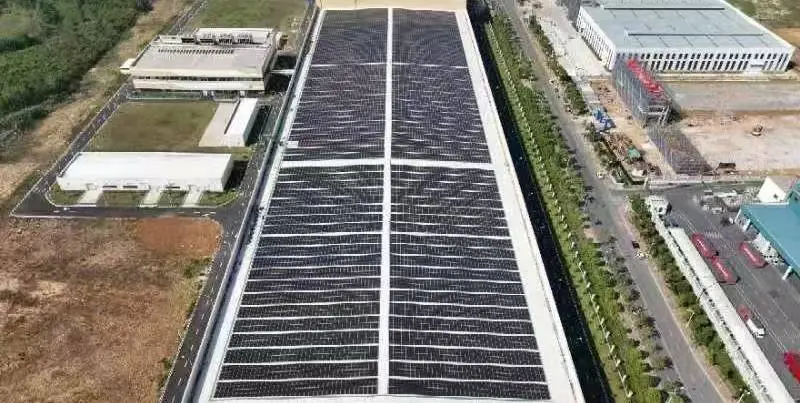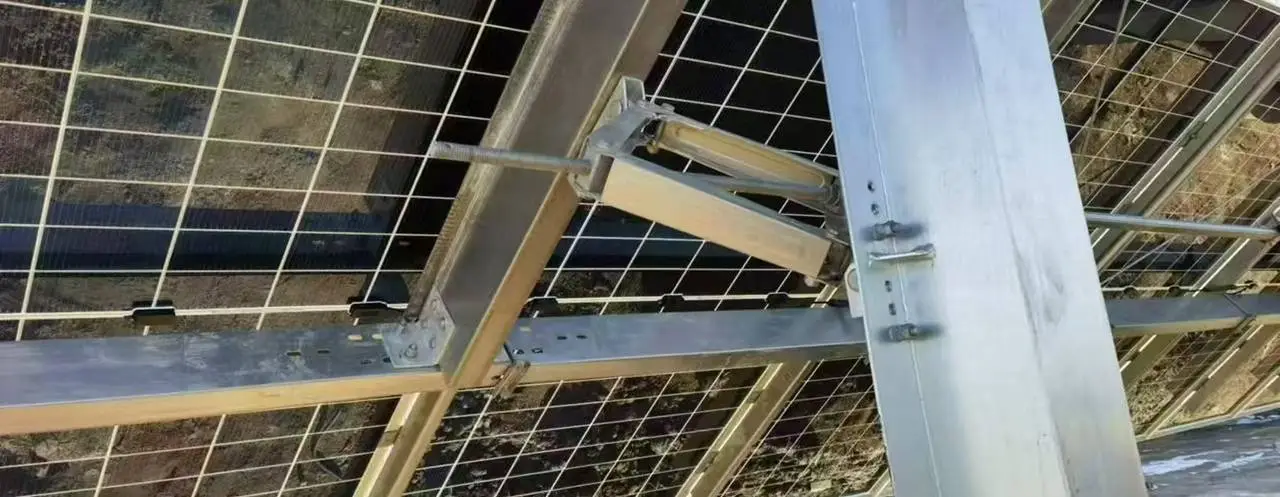The photovoltaic power generation system mainly consists of solar panels, photovoltaic inverters, DC combiner boxes, DC distribution cabinets, AC combiner boxes or distribution cabinets, step-up transformers, solar brackets and some auxiliary equipment (such as detection, monitoring and protection devices). In addition, some systems also contain energy storage batteries to improve power supply stability.
(1) Solar panels (PV modules)
Solar panels (also known as photovoltaic modules) are the core components of photovoltaic power generation systems. Their main function is to convert solar radiation energy into direct current. Subsequently, the direct current is converted into alternating current by photovoltaic inverters for users to use or to be connected to the power grid for power generation.
Series and parallel connection of photovoltaic modules
When a higher output voltage is required, multiple panels are connected in series to form a photovoltaic array.
When a larger output current is required, multiple panels are connected in parallel to increase the system capacity.
Classification of photovoltaic modules
The commonly used photovoltaic modules currently include:
Crystalline silicon modules:
Monocrystalline silicon modules: high conversion efficiency, suitable for scenarios with limited space.
Polycrystalline silicon modules: low cost, stable performance, and wide market application.
Thin-film modules:
Amorphous silicon modules, microcrystalline silicon modules.
Copper indium gallium selenide (CIGS) modules, cadmium telluride (CdTe) modules.
Suitable for weak light environments, can be flexibly installed, but the conversion efficiency is slightly lower than that of crystalline silicon modules.
(2) Photovoltaic inverter (PV Inverter)
The main function of the photovoltaic inverter is to convert the direct current (DC) generated by the solar panel into alternating current (AC) and provide it to the power grid or users.
Maximum power point tracking (MPPT) technology
The power output of the solar panel changes with the voltage at both ends.
The inverter adjusts the voltage in real time through the MPPT algorithm to ensure that the module is always at the maximum power point and improve the system efficiency.
Grid-connected and off-grid inverters
Grid-connected inverter: used to connect to the public power grid.
Off-grid inverter: used for independent power supply system, usually used with energy storage batteries.

(3) DC Combiner Box
DC Combiner Box is mainly used in photovoltaic power generation systems with a capacity of more than hundreds of kilowatts. Its functions are:
To aggregate the DC output of multiple photovoltaic modules and merge them into the input of the photovoltaic inverter.
To provide circuit protection: It is equipped with fuses, circuit breakers, lightning arresters (SPD), and intelligent monitoring equipment to improve the safety and reliability of the system.
To simplify system wiring and make the connection between the solar panels and the inverter neater and more orderly.
To improve operation and maintenance efficiency: When a local fault occurs in the photovoltaic array, the combiner box can be partially disconnected for maintenance without affecting the operation of the entire system, thereby ensuring the efficiency and stability of photovoltaic power generation.
(4) DC Distribution Cabinet
In large-scale photovoltaic power generation systems, in addition to using multiple DC combiner boxes, DC distribution cabinets are also used as secondary or tertiary converging equipment. Its main functions include:
Aggregating the output of multiple DC combiner boxes, and then performing secondary or tertiary converging before outputting to the inverter.
Optimizing wiring, simplifying installation, and improving system operation and maintenance efficiency.
Improving system safety and reliability, and facilitating monitoring and maintenance.
(5) AC Distribution Cabinet
The AC distribution cabinet is installed between the inverter and the AC load or power grid. It is mainly used to receive, dispatch, distribute and measure electrical energy, and ensure power supply safety.
Main functions:
Receive and distribute the AC power output by the inverter, and transmit power to the load or power grid.
Provide power safety protection and monitor system operation status, such as voltage, current, power and other parameters.
The AC junction box (AC Junction Box) used in the string inverter system merges the AC output of multiple inverters into the AC distribution cabinet and then connects to the grid.

(6) Step-up transformer
In the photovoltaic power generation system, the step-up transformer is mainly used to step up the low-voltage AC power (0.4kV) output by the inverter to the same medium- and high-voltage voltage level as the grid (such as 10kV, 35kV, 110kV, 220kV, etc.) to achieve long-distance power transmission.
Small photovoltaic grid-connected system:
Generally directly connected to the user-side low-voltage distribution network (0.4kV), self-generated and self-used, and the excess power is directly connected to the grid, without the need for a step-up transformer.
Large photovoltaic grid-connected system:
It is necessary to use a step-up transformer to step up to a high voltage level to reduce transmission losses and improve transmission efficiency.
Common transformer types:
Single-phase transformer
Three-phase transformer (suitable for large-scale photovoltaic power stations)
Dry-type transformer (suitable for indoor or relatively clean environments)
Oil-immersed transformer (suitable for outdoor, high temperature and other environments)
(7) Photovoltaic brackets (PV Brackets)
PV brackets are used to fix solar panels to ensure their optimal orientation and tilt angle to maximize light utilization.
Photovoltaic bracket types:
Fixed tilt brackets: low cost, simple structure, commonly used in distributed photovoltaic power generation systems.
Adjustable tilt brackets: the tilt angle can be manually adjusted to adapt to the changes in the solar altitude angle in different seasons and increase power generation.
Automatic tracking brackets:
Single-axis tracking brackets: can be divided into flat single-axis, tilted single-axis, and azimuth single-axis tracking brackets, which can track the east-west movement of the sun and improve light utilization.
Dual-axis tracking brackets: can track the trajectory of the sun throughout the day, with the highest power generation efficiency, but the cost is relatively high.
(8) Photovoltaic system ancillary facilities (Ancillary Facilities)
Auxiliary facilities include monitoring systems, lightning protection and grounding systems, etc., to ensure the safe and stable operation of the photovoltaic system.
Monitoring and detection system:
Real-time monitoring of the operating status of the photovoltaic system, including:
The working status of the solar panel.
The operating status of the inverter.
The voltage, current, and power data of the photovoltaic array.
Grid voltage, frequency and other parameters.
Environmental data such as solar radiation intensity.
Remote monitoring: Data can be obtained remotely through wired or wireless networks, and the system status can be monitored through computers or mobile terminals for easy maintenance and management.
Lightning protection and grounding system:
Lightning protection device (SPD): Protects equipment from damage caused by lightning strikes.
Grounding system: Ensures system safety and prevents electric shock and equipment damage.
(9) Energy Storage System
The function of the energy storage system is to store the electricity generated by photovoltaic panels so as to provide electricity at night, on cloudy days or when the power grid fails.
Basic requirements of the energy storage system:
Low self-discharge rate to ensure long-term storage of electricity.
Long life to reduce maintenance and replacement costs.
High charging and discharging efficiency to optimize energy utilization.
Deep discharge capability to increase the available capacity of the battery.
Wide temperature adaptability range, suitable for various environmental conditions.
Maintenance-free, reducing operating costs.
Common energy storage battery types:
Maintenance-free lead-acid battery (low cost, relatively short life).
Lead-carbon battery (long life, suitable for frequent charging and discharging scenarios).
Lithium iron phosphate battery (LiFePO4) (high safety, long life, high energy density, becoming the mainstream energy storage battery).
Large-capacity energy storage system:
It is necessary to connect multiple batteries in series or in parallel to form a battery pack (Battery Pack) to provide greater energy storage capacity.
Summary
The photovoltaic power generation system consists of multiple core devices, including photovoltaic modules, inverters, DC/AC power distribution equipment, transformers, brackets, monitoring systems, energy storage systems, etc., and each part works together to achieve efficient and stable photovoltaic power generation. For photovoltaic systems of different scales and application scenarios, equipment selection and system design are crucial to ensure optimal energy efficiency and economy.